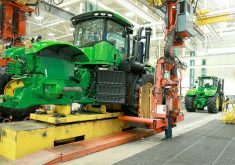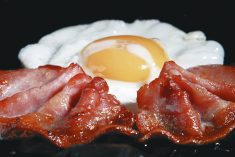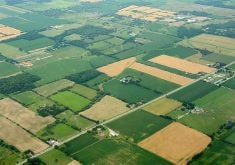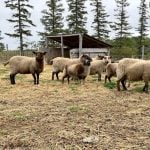One of the best ways to boost herd fertility is to alter the age at which heifers mature and reach puberty. For a heifer to be a good lifetime producer, it must cycle and conceive early in the breeding season.
If a heifer is born in the first month of calving, it will be 14 to 15 months old at the time of its first breeding. If it is born in the second month, it will be 13 to 14 months at breeding. If it is born later, it will be too young to conceive during the regular breeding season, unless it reaches puberty early.
Read Also

Budget seen as fairly solid, but worrying cracks appear
The reaction from the agriculture industry to prime minister Mark Carney’s first budget handed down November 4th has been largely positive.
Puberty is defined as the time at which a heifer begins cycling. Bulls with large scrotal circumferences are more likely to sire daughters that reach puberty at a younger age than bulls with smaller scrotal dimensions. The age of puberty is also influenced by breed and weight, which is determined by rate of gain.
Breed has a direct effect on a heifer’s age at puberty. While smaller British breeds reach puberty before larger cattle, such as exotic breeds, not all small breeds are the same. One study showed Angus cattle reached puberty at 11.2 months while Herefords didn’t start cycling until 13.6 months, even when fed identically. Crossbreds tend to reach puberty sooner than purebreds. When Herefords, which reach puberty at 13.6 months, were crossed with Shorthorns, which reach puberty at 10.9 months, the resulting heifers started cycling at 9.7 months. Hereford-Angus heifers in the study reached puberty at 11.8 months, a little better than the average of their parents.
Managers can also influence time of puberty by adjusting growth rates. Montana researchers fed several groups of heifers over the winter so they grew either 0.6, one, or 1.5 pounds each day. On June 15, the start of the subsequent breeding season, the groups weighed 458, 527, and 584 lb. respectively.
When the heifers with the low winter gains were 11/2 years old, only 50 percent were pregnant. Twenty percent of them failed to cycle during the breeding season. Eighty-six percent of the heifers that gained one lb. per day conceived while 87 percent of those that gained 1.5 lb. per day became pregnant. This emphasizes the role of winter feeding in heifer development. When fed correctly, heifers will reach puberty early enough to be bred at the start of the breeding season.
Tables detailing the nutrient requirements of growing heifers can be obtained from feed companies and extension offices. By combining this information with a current feed analysis, producers can construct a feeding program that will promote optimal growth. Though striving for a 100 percent conception rate with every calf flourishing to weaning is admirable, this goal is rarely obtainable. Input costs required to get the last few cows or heifers pregnant are prohibitively high.
Jeff Grognet is a veterinarian and writer practising in Qualicum Beach, B.C.














